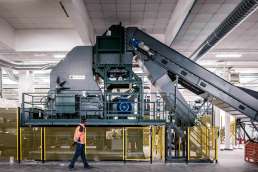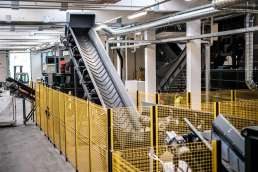Sogliano Ambiente Spa spreads its business wings to the End-of-Waste recovery of WEEE scrap
A historic company from the Emilia-Romagna Italian region, Sogliano Ambiente Spa, is headquartered on the slopes of a hilly area a few kilometres away from Sogliano al Rubicone. Founded in 1996, the company was among the very first to tackle local waste collection with an entirely ground-breaking approach: the commitment to build a management and recovery model designed to create new energy resources and employment while fully respecting the environment and human health.
Consistent with this vision, Sogliano Ambiente has recently opened new premises to collect and recycle non-hazardous electrical and electronic waste, choosing to use Panizzolo Recycling Systems’ technologies to treat also household WEEE in the End-of-Waste process. Let us further discuss this topic with Michele Bentivoglio, head of the new plant in the hamlet of Ponte Uso.
Hello Michele, can you give us a brief overview of Sogliano Ambiente?
Michele Bentivoglio: The company has been active in the waste industry for 30 years. Initially founded to run a landfill for special non-hazardous waste, over the years, it has progressively expanded to include processing for the recovery of secondary raw materials and integrating a public shareholding with the municipality of Sogliano al Rubicone.
Our company includes multiple systems in various locations, each having its own dedicated staff and being logistically designed for the type of treatment to be carried out. Our staff consists of 120 people, but we plan to hire additional personnel after commissioning the new Panizzolo plant for the recovery of metals from WEEE collection. Our goal is to offer new employment opportunities in the area, thus offsetting the economic well-being of the company with the provision of new jobs.
Overall, every year we handle about 250 thousand tonnes of mixed waste, which we treat in our plants for the production of clean energy, biogas, fertilisers, materials recovery and more. This integrated recovery hub, located in Ginestro, is regarded as a regional virtuous example for the recovery of raw materials. With this in mind, and to meet a tangible need for the company and the local area, we are starting up the new WEEE treatment plant for which I am in charge of management.
What types of treatment have you decided to implement over the years?
Michele Bentivoglio: Thanks to a wide range of systems, we can operate in different branches of the industry. In 2006, we opened the first recovery plant for mixed packaging specialising in the treatment of dry fraction waste, such as wood, paper, plastic, iron, and glass. In 2013, we implemented a processing plant for the treatment of organic fraction waste, which recovers biogas to make quality compost for resale to local farmers and beyond. We have a treatment line – unique in our area – that is designed specifically for the recovery of photovoltaic panels, from which we will recover metals, glass, and silicon powders. To further diversify our services, we added the Panizzolo plant for the disposal of non-hazardous WEEE to our list of achievements.
During our landfill recovery and anaerobic bio-stabilisation activities for the treatment of organic waste, we also produce biogas to be converted into electricity with a 30 million kW/h yield a year.
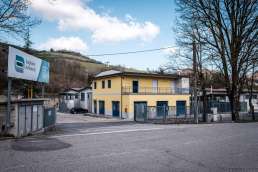
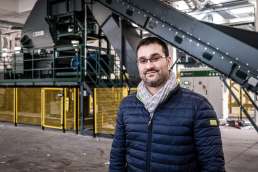
When did the idea of treating WEEE waste come about?
Michele Bentivoglio: Sogliano Ambiente is a company that carries a certain significance in Emilia-Romagna. Over the years, we have launched a review of our business plan and, as a result, changed course while expanding our treatment offer. We were interested in opening up to the circular economy and the end-of-waste process in this area, and so we approached WEEE treatment for the first time. The project started about 7 years ago, and now we are going to launch the first non-hazardous WEEE treatment and disposal plant in the area.
Why did you choose Panizzolo? Was it a successful partnership?
Michele Bentivoglio: We were looking for a partner who could assist us in this process, both in implementing the system as well as in the design and logistical choices due to the installation site’s constraints. Panizzolo was a company that could indeed take up the challenge, assist us in the design and provide us with the best solution for the construction of this plant.
Together we succeeded in creating a good plant! Panizzolo was able to assess the project in its entirety, from the conformity of the shed to the definition of all logistical aspects and machinery performance. Panizzolo was what we were looking for: a partner who would provide us with the most suitable solution for our needs and who could follow us over the years in the production process, maintenance and updating of the plant.
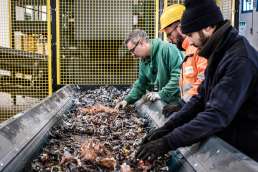
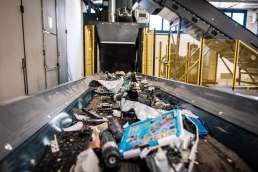
How is the system made up? What types of scrap will you treat?
Michele Bentivoglio: The solution we decided to install includes a line dedicated to the volumetric reduction of electronic scrap through a hydraulic Panizzolo opener that is used for a brief manual sorting and to prepare the scrap for the second processing step.
The second line is used to grind and sort out metals through a Flex 1000 hammer mill (315 kW – up to 13 tonne/h) and two sorting systems for recovering the products leaving the mill, which are arranged in such a way as to conduct an End-of-Waste cycle for ferrous and non-ferrous metals.
From the outset, we were looking for a system that would allow us to be flexible in processing several types of WEEE scrap and, thanks to the interchangeable cradle of the Panizzolo mill, we will be able to process both small- and medium-sized household appliances.
What are your goals for the future?
Michele Bentivoglio: We want to enter this sector step by step, aware of its diversity but confident that this is the most favourable time for us. Raw and secondary materials are increasingly in demand, so much so that we have already devised many plans to reintroduce outputs into the production cycle. I would say that it is an excellent road to start going!
